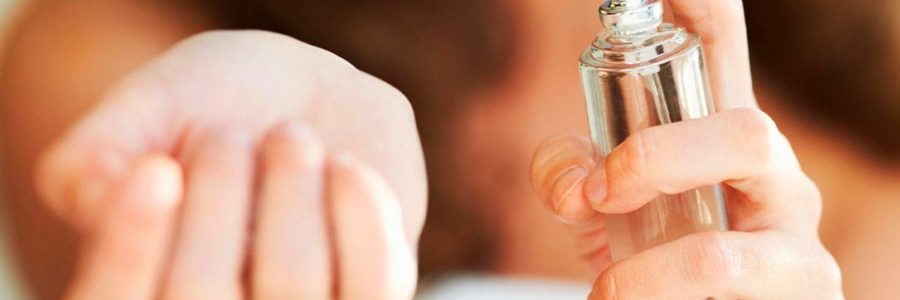Toxic Chemicals Banned: Synthetic scents are linked to many human diseases and have been banned in many countries worldwide. Despite this, many new products are coming out every month in America that are detrimental to human health. Therefore, you must equip yourself with the knowledge to filter products off the shelves yourself since our governments are not!
![]()
This article has been medically reviewed by Dr. Charles Penick, MD![]()
The Danger of Synthetic Scents

Although some people are more sensitive to synthetic scents than others, these airborne toxic chemicals take a health toll on all humans. Over 95% of the chemicals used in synthetic fragrances are derived from crude oil. Chemicals like benzene derivatives and various other known toxic substances are linked to many health conditions, including birth defects, infertility, central nervous system disorders, and cancer 1-2. Their impact on hormonal dysregulation is also linked to many short-term symptoms, including skin and eye irritation, brain fog, dizziness, nausea, and headaches 3.
‘Natural’ Scents Aren’t So Natural Either

Companies use many other tricks to make you think their products are safe, healthy, and “natural.” One of the biggest hoaxes is using the words natural scent on a label, which could not be farther from the truth. Using words like fragrance, parfum, or natural scent includes over 3,000 different possible toxic chemical ingredients 4.
These endocrine-disrupting scents are everywhere in our modern products: perfumes, soaps, shampoo and conditioners, toilet paper, deodorants, laundry detergents, sunscreen, scented candles, lotions, incense, and car freshers. Studies show that 95% of body care products contain fragrances as an ingredient 5.
Europe Bans Toxic Fragrance Ingredient
We are still a long way from any single country truly placing a widespread ban on fragrances, but every so often, one ingredient is deemed so toxic that it gets banned. In 2020, the European Union classified Lilial as “reprotoxic,” meaning it cannot be considered safe concerning reproductive health and fetal development 6. Since March 1, 2022, no products containing Lilial can be found on any store shelves across Europe.
…But Lilial Toxin is Still on Shelves in America
Many countries are miles ahead of the US in protecting consumers against toxic ingredients. For example, Europe has banned hundreds of substances still being sold across America in various capacities 7.
Lilial is found in various brand name products across America, including the brand new release of Kim Kardashian’s Eau De Parfum Rollerball. In addition, it is used in other well-known brand names, including Victoria’s Secret, Marc Jacobs, Paul Mitchell, Garnier, Mane ‘N Tail, TRESemme, and BEBE 8.
Unlike food labels, many ingredients aren’t listed in cosmetic and body care products. The FDA warns consumers on their website that they do not enforce the same stringency of disclosure regarding the allergens in cosmetics 9.
How to Protect Yourself Against Toxic Beauty and Body Ingredients
With all this information about the toxicity of fragrances, one might think that the American government might intervene to protect its people, but we are not there yet. As a result, consumers have to take it into their own hands to filter through ingredient lists and choose accordingly.
1. Avoid Ingredients
The first step is avoiding ingredients you know to be harmful or aren’t sure about. Any product containing fragrance, parfum, or ‘natural scents’ is a definite no. Unfortunately, greenwashing tactics make many products look natural by using words like ‘hypoallergenic,’ which does not mean they aren’t toxic. Even ‘fragrance-free’ products can contain non-fragrance-related poisonous chemicals!
One fundamental way to know if your product is using genuinely natural scents is to see if the label uses the actual name of the sovereign ingredient. For example, a natural lavender scent would be marked as simply ‘lavender’ or ‘lavender essential oil.’ You’re in for synthetic replicas whenever you see ‘natural lavender scent’ or ‘natural fragrance (lavender).
2. Make Your Own
Since 95% of personal care products contain synthetic fragrances, it may be best to start making your own body care, laundry, and beauty products. Sourcing ethical, high-quality products are possible, but so is making simple products using all-natural ingredients like vinegar, bi-carb soda, and essential oils. Blog’s across the country detail how accessible, affordable, and easy it is to make many of these products at home.
3. Lobby
Whether or not you want to work your way up into government, there are many more local ways to start spreading the news about synthetic fragrances. For example, you can talk to your local gym or coffee shop about their use of artificial sprays in the bathrooms. Share with family and friends when they light scented candles or hang deodorizers in their cars.
Summary
Synthetic fragrances contribute to short- and long-term health implications. Marketing schemes and deceiving wording also make it difficult to avoid since “natural fragrances” are under the umbrella of over 3,000 toxic chemicals. Although many ingredients have been banned in countries worldwide, including Europe, most remain on the shelves across America. To protect yourself, really get to know the ingredients on the products you buy, and better yet: make your own.
Medical Disclaimer: information on this website is not intended to replace a one-on-one relationship with a qualified health care professional and is not intended as medical advice. It is intended to share knowledge and information. This article has been medically reviewed by Dr. Charles Penick, MD, for the accuracy of the information provided, but we encourage you to make your own healthcare decisions based upon your research and in partnership with a qualified healthcare professional.
References
- “Neurotoxins, at Home and the Workplace: Report to the Committee on Science and Technology, U.S. House of Representatives, Ninety-Ninth Congress, Second …” HathiTrust, https://babel.hathitrust.org/cgi/pt?id=mdp.39015043251746&view=1up&seq=1.
- “Fragrance Ingredients.” Women’s Voices for the Earth, 25 Nov. 2020, https://www.womensvoices.org/fragrance-ingredients/.
- Scents and Sensitivity, Focus Volume 6, Number 12, Dec. 1998, https://www.ncbi.nlm.nih.gov/pmc/articles/PMC1533259/pdf/envhper00535-0024-color.pdf.
- “A Sense of Responsibility, a Commitment to Sustainability.” Sustainability, https://ifrafragrance.org/priorities/sustainability#.WCDfWRIrJmB.
- “Why Fragrance Disclosure?” Safe Cosmetics, https://www.safecosmetics.org/fragrance-disclosure/learn-more/.
- “Lilial and Fertility: Eu Bans Toxic Fragrance Ingredients from Personal Care Products.” Environmental Working Group, 21 Mar. 2022, https://www.ewg.org/news-insights/news-release/2022/03/lilial-and-fertility-eu-bans-toxic-fragrance-ingredient-personal.
- “Cosmetic Products Regulation, Annex II – Prohibited Substances.” ECHA, https://echa.europa.eu/cosmetics-prohibited-substances.
- “Ewg Skin Deep®: What Is Lilial.” EWG, https://www.ewg.org/skindeep/ingredients/700872-LILIAL-LILIAL/.
- Center for Food Safety and Applied Nutrition. “Fragrances in Cosmetics.” U.S. Food and Drug Administration, FDA, https://www.fda.gov/cosmetics/cosmetic-ingredients/fragrances-cosmetics#labeling.


